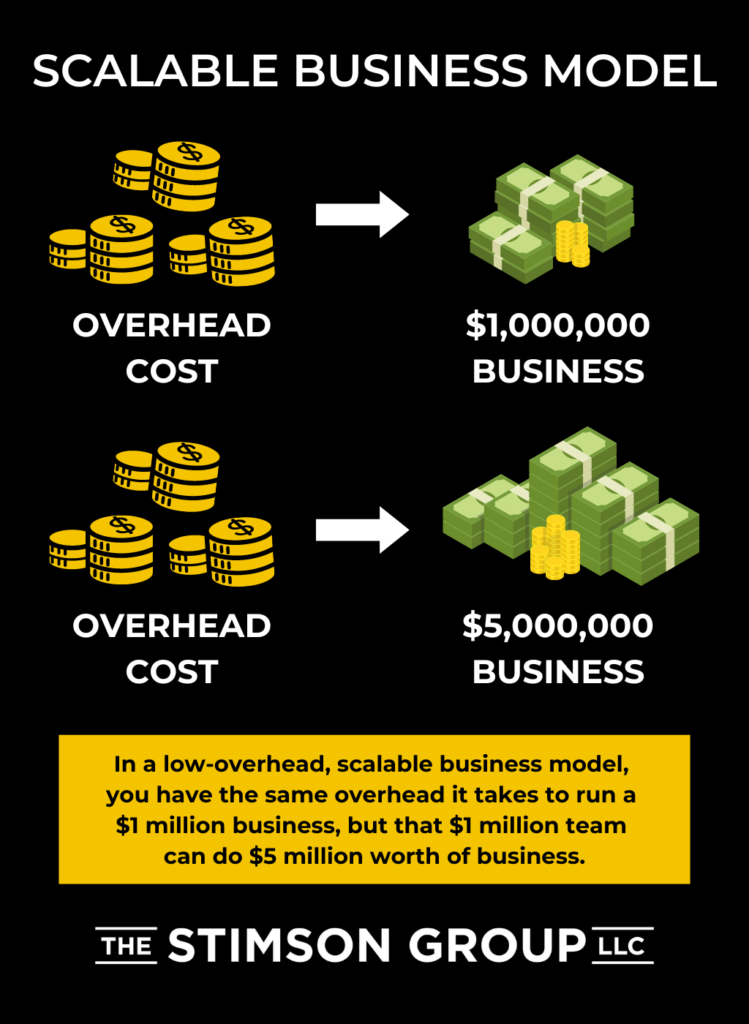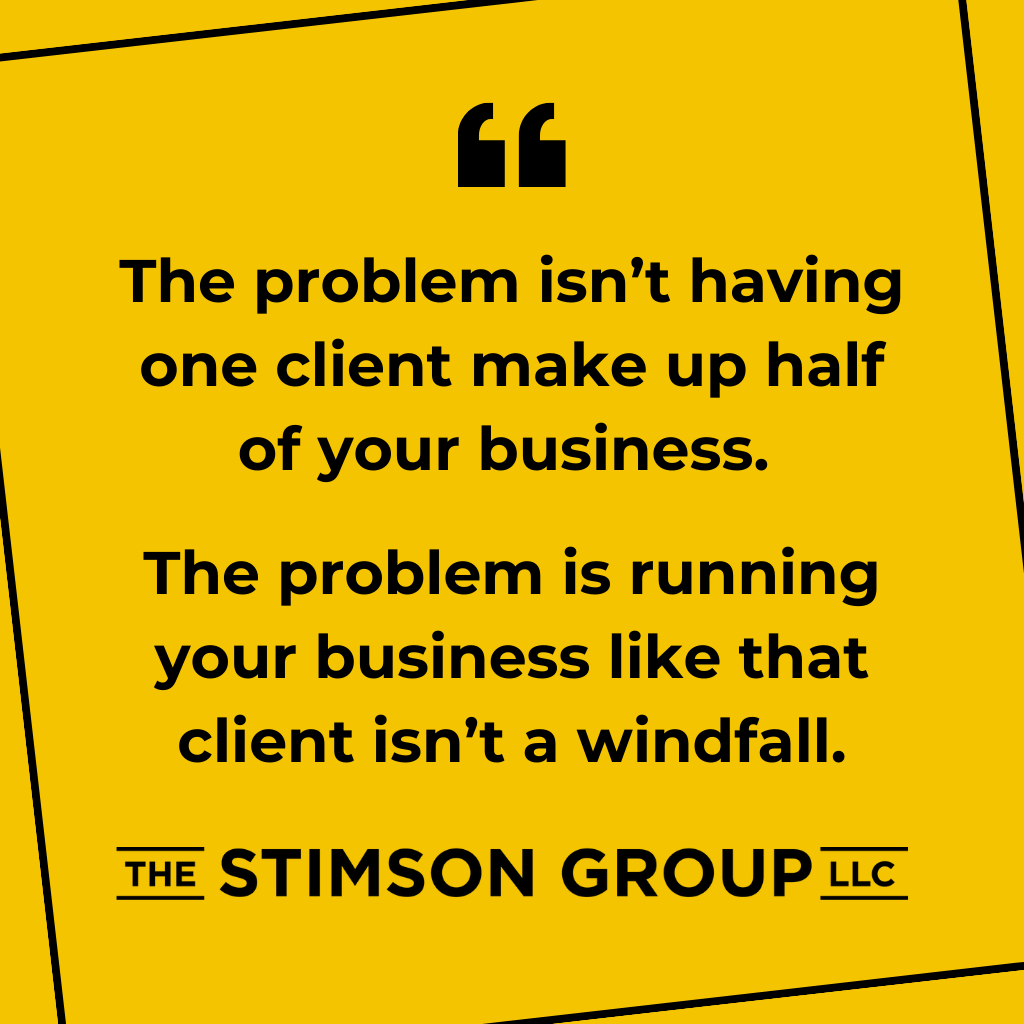
When a single client knows they’re your biggest customer, it’s great for them and terrible for you. If this is you, how did you get here and what can you do about it?
This scenario usually comes up in smaller businesses under maybe $4 million in revenue. But it can happen in larger companies as well.
The Scary Scenario
Say you’re a $3 million company, and $2 million of your business comes from one client. If you’re the owner of a business like this, you’re probably very nervous.
Everything revolves around that one client. You think, “I have to take care of this client because they make up two-thirds of my business. I can’t afford to lose them!”
Here’s the dirty little secret: Your client knows that too. There’s a certain type of client that loves to be in this situation because it gives them TONS of leverage.
You dedicate most of your resources to this client, and you have to sell to them on price because you can’t risk losing even a sliver of their business. You beef up your resources to operate as “A $3 Million Company” and hire all the staff — technicians, project managers, warehouse crew — you think you need to run $3 million worth of business. In short, you load up on overhead and expenses.
Before you know it, you’re caught in a vicious cycle that haunts you year after year. You’re completely dependent on your $2 million customer to pay for all these people, resources, and equipment. You have to keep working the hamster wheel. There’s no other choice.
If you go out and try to find more business, you’ll end up overtaxing your team. If your big client finds out their usual crew is out on somebody else’s show — leaving them stuck with new people — they’re not happy about it. Nobody’s happy. Especially you.
This is a scenario we all want to avoid. But it still happens to us. Why?
Where the Real Problem Lies
In this scenario, the problem seems to be bringing in too high a percentage of revenue from a single client. But is that really the problem?
In reality, the problem starts with the owner’s mindset: “I’ve got a $3 million company. Therefore, it needs $3 million worth of infrastructure.”
If the owner brings in a consultant (that would be me), they’ll get a very different point of view: “You have a $1 million company that has an annual $2 million windfall.”
In other words, the problem isn’t with the $2 million from one client. In fact, that’s fantastic! The problem is with how the business is operating.

Reduce Risk by Increasing Scalability
If you were in this situation before the pandemic, I would have shown you how to run your company as a $1 million business and still retain this big client — by increasing the amount of outsourcing you do for execution.
In the post-pandemic world — and here’s the kicker — I’d give you the same answer. I don’t get to do that very often.
In a low-overhead, scalable business model, you have the same overhead it takes to run a $1 million business, but that $1 million team can do $5 million worth of business. Why? Because the core team isn’t involved in the direct work of execution.
If you follow the scalable model, you’ll be able to take care of your biggest client by outsourcing most of your direct labor. At the end of the day, this allows you to do more business. You simply scale up your outsourcing as you get more clients, and scale it back if you get fewer.
This frees you from that deep dependence on your biggest client.
Now, if for some unfortunate reason you do lose that client — or they lose part of their business, affecting how much they buy from you — you’re not going to sink from the weight of your excess overhead. You’ll also be in a better position to replace that work with other customers without fear of compromising your relationship with the big client.
Increasing scalability reduces risk. Problem solved.

Conclusion
The problem isn’t having one client make up half of your business. The problem is running your business like that client isn’t a windfall.
Stop living in fear. Introduce scalability into the equation, and figure out how to make sustainable profit from other sources so you’re not reliant on one client.





Leave a Reply